Today marks the anniversary of the burial of Tabby Aykroyd, who had been a loyal servant to the Brontë family since 1824. She died on 17th February 1855 and was buried four days later, and she plays a central role in the Brontë story. In today’s post we’re going to look at what’s known about Tabby, and reveal new evidence which could tell us much more about her.
We know that Tabby, or Tabitha, to give her her full name, was already in her fifties by the time she entered Haworth Parsonage. Previous parsonage servants Nancy and Sarah de Garrs had recently left their positions, and with his six children by then motherless, Patrick Brontë and his sister-in-law Elizabeth Branwell decided that, in Patrick’s words, an ‘elderly’ woman was better than two younger ones.
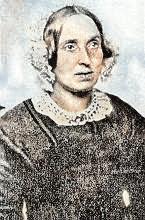
Tabby quickly became a firm favourite of the young Brontes, akin to a grandmother figure. It is believed that she often shared tales of Yorkshire folklore with her employer’s children, and that these stirring tales did much to inspire the imagination of the young Brontës; their influence can be seen most strongly in Wuthering Heights.
At the close of 1836, Tabby slipped on ice upon the cobbles of Haworth’s steep Main Street, badly breaking her leg and leaving her with a walking impediment for the rest of her life. Aunt Branwell recommended that Tabby should be let go, not merely because she could no longer perform all her duties but so that Tabby could be looked after by her sister. The young Brontës, however, were having none of it. They refused to eat until the decision was reversed, and under these circumstances Tabby was allowed to stay. It is clear then that to the Brontë siblings, Tabby was an essential and much loved part of the family unit.
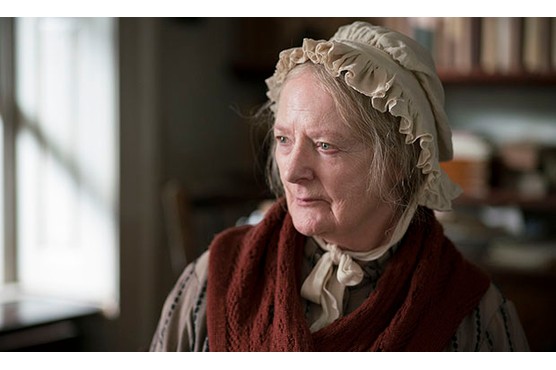
Nevertheless, Tabby’s leg injury flared up from time to time, and in 1839 she moved into the house of her sister Susannah Wood. It must have been a lengthy convalescence for she was still there when the 1841 census was taken, but by 1842 she had returned to the parsonage. We know from the interview that Martha Brown (the younger servant later brought in to work alongside Tabby) gave that Tabby also became partially blind in later life, just as her employer Patrick Brontë had. This led to Charlotte secretly finishing off the work that Tabby had been unable to do – such as removing the eyes from potatoes. In this we see the continued love that Charlotte had for the old woman who’d been by her side from childhood; her main concern was that no attention should be drawn to Tabby’s errors, and that Tabby herself should never know that Charlotte had corrected them.
Alas, on 21st February 1855, Charlotte broke some sad news in a letter to her friend Ellen Nussey: ‘our poor old Tabby is dead and buried.’ Charlotte could not have comforted Tabby in her final days as by that time she herself was coming to the end of her life – she survived the woman who had started as her nursemaid, becoming a servant and then a friend, by just over a month.
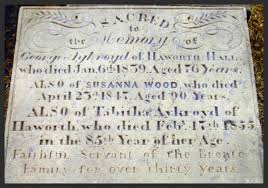
As another mark of the respect that she was buried at the head of the churchyard, just beyond the parsonage’s garden wall. The memorial stone reads: ‘Sacred to the memory of George Aykroyd of Haworth Hall, who died Jan 6th 1839 aged 76 years. Also of Susanna Wood, who died April 19th 1845 aged 90 years. Also of Tabitha Aykroyd who died Feb 17th 1855 in the 85th year of her age. Faithful servant of the Brontë Family for over thirty years.’
For such an important part of the Brontë story, it seems that little concrete is known of Tabitha Aykroyd. As the Brontë Society website itself says: ‘Almost nothing is known of Tabitha Aykroyd’s life before she entered 1824, aged 53 (born around 1771). She was almost certainly a native of Haworth, and we know of two sisters: Rose, who married a Bingley man called Bower, and Susannah, who married a Haworth man called Wood. Tabitha never married, and while there is no record of her life before she entered the Parsonage in 1824, it is thought she had worked in domestic service and on farms.’
This then is the sum of our knowledge on the Brontës’ beloved Tabby – and yet much of it may not be true, after all. As I always like to do I have been heading into newspaper archives and the world of genealogical research, and the results have certainly been intriguing.
Few records exist for Tabitha Aykroyd, but could that be because she wasn’t born Tabitha Aykroyd at all? The supposition that Tabitha was unmarried has prevailed, but it wouldn’t have been unusual for a woman in her fifties in the early 19th century to have another marital status – widowed. We must also consider her appointment as servant to the Brontë family in 1824. Her duties would have been all encompassing, from cleaning the rooms to cooking meals, but she would also have been expected to help look after the young Brontës – six children aged between four (Anne) and ten (Maria) with no mother. Patrick Brontë and Aunt Branwell, who by that time was also living in the parsonage, were very shrewd and practical people – what sort of person would they have thought suitable to take on this role: someone who had raised their own children, or someone with no experience of children at all?
There is no record of baptism for a Tabitha Aykroyd in the vicinity in the 1770s (or any similar name as spellings could be very inconsistent at this time), but let’s take a look at this certificate from the parish register of Haworth’s St. Michael’s and All Angels church:
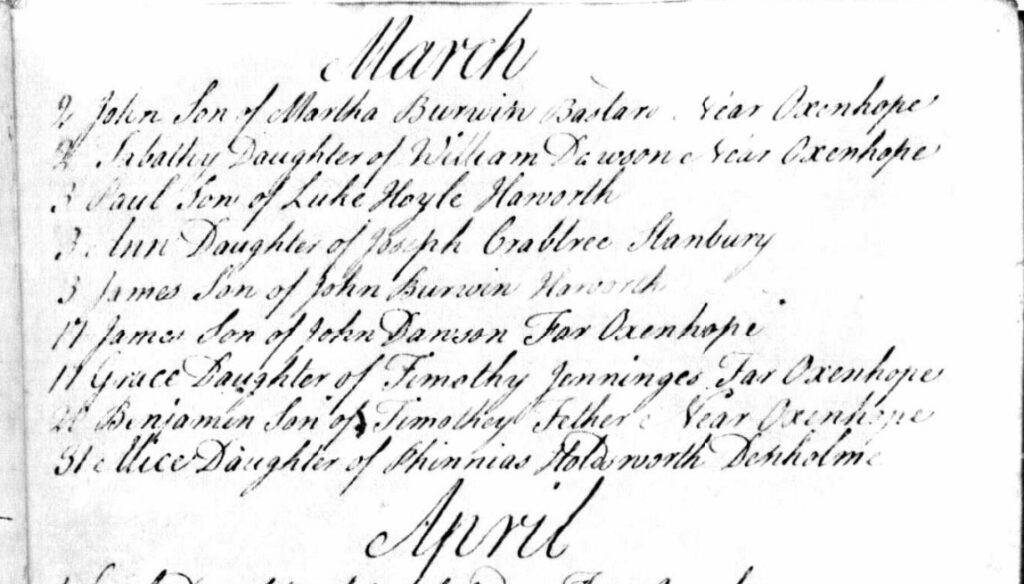
On 2nd March 1773 we find recorded the baptism of Tabathy Dawson, more correctly spelled Tabitha Dawson, the daughter of William Dawson of Near Oxenhope, the neighbouring settlement which formed part of the Haworth parish. Fast forward 19 and a half years, and we find a happy event in the life of young Tabitha Dawson – she is getting married; to Joseph Aykroyd.
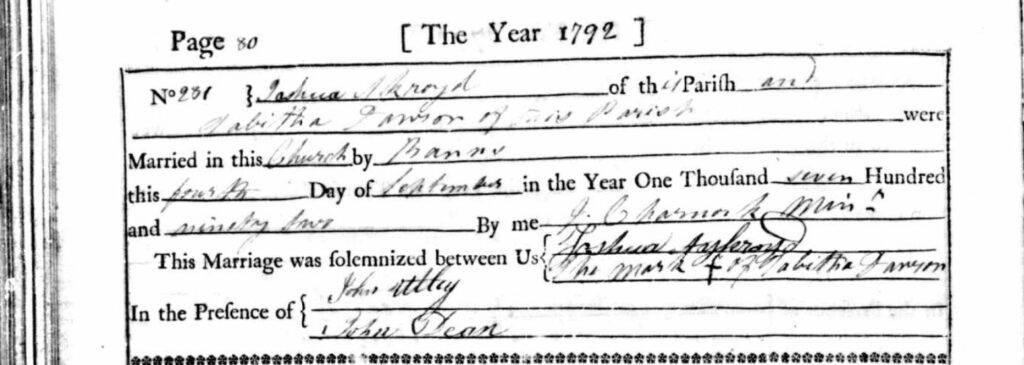
Here then is the creation of a Tabitha Aykroyd, married in the Haworth parish church later presided over by Patrick Brontë on the 4th September 1892. A year and two months later we find in the register another happy event – the baptism on November 15th 1793 of, ‘Jonathan son of Joshua and Tabitha Aykroyd.’
In fact, it seems that Jonathan was the first of eight children born to the Aykroyds, including the tragic Hannah Aykroyd who was born and died in 1807. Another scenario is presenting itself; could the Tabby Aykroyd who entered Haworth Parsonage in 1824 be a widow who was well known to the parish priest, and who had extensive experience of raising children and looking after a busy household thanks to her own large family?
What then of Susannah Wood and George Aykroyd, buried alongside Tabby? A family tree that I examined showed a George Aykroyd and Susannah Aykroyd; the latter of whom married William Wood in Haworth on 26th December 1782. There was no Tabitha in their family, but they were brother and sister to one Joshua Aykroyd. It seems to me, therefore, likely that Tabitha Aykroyd was in fact the sister-in-law of George Aykroyd and Susannah Wood.
As always, alas, we can’t pop into our nearest time machine and settle these things once and for all; but I believe that the genealogical records, and the simple logic behind Tabby’s appointment, makes it possible that Tabitha was the widow of Joshua Aykroyd, and the mother of a large family of her own. I would say that it’s probable.
Archives and genealogical websites are a fascinating place. I made another interesting discovery this week – look at this charming picture from the Leeds Mercury in June 1930; taken by Wilfred Moore of Keighley it shows his ten year old son being dragged to the sea in Sandsend, near Whitby. I was also this week reading an autobiography entitled Tomorrow Will Be A Good Day in which the author talks of being taken froim Keighley to Sandsend every weekend by his father, whereupon he loved swimming in the sea in his woolen bathing costume. There can be no doubt then that this picture shows a young boy who would grow up to be another legend of Brontë country: the late great Captain Sir Tom Moore.
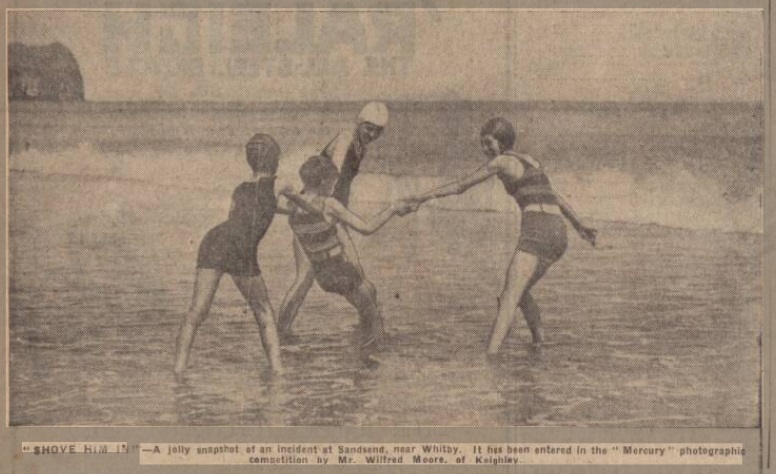
There is also no doubt that Tabitha Aykroyd was the perfect woman for the task she was given in 1824, and she entered Haworth Parsonage at the perfect time. She contributed greatly to a loving atmosphere that the Brontë siblings thrived on, and she helped to fire their creativity that had such a brilliant outcome.
I will see you again next week for another new Brontë blog post; one more thing – if Tabitha Dawson is indeed our Tabitha, then her baptism on 2nd March suggests that she was born in the last week of February. Let’s all say, ‘well done Tabby Aykroyd, and Happy Birthday!’
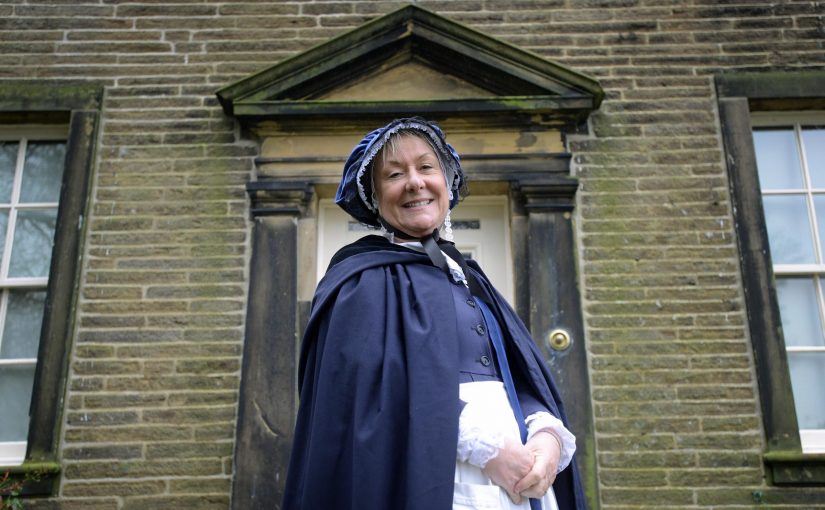
So we can come to conclusion that all her children died before she began to work for the Bronte family? How sad…This would explain the strong fondness for the Bronte siblings
I think some will have died, but some may have reached adulthood and gone off to start lives of their own.
So there could be descendants of Tabitha around!
Yes I believe .
William Ackroyd grandfather?
Edith Cranswick then
Mabel, Edith, Harry
Edith Cranswick married Eric Kenworthy
Neal Graham and Robert Andrew Kenworthy
Me
This piece about Tabitha is fascinating!
I don’t remember reading much about her before she was with the Brontes before. Although this is, to some extent, surmise, albeit based on research, I am sure someone could write a fictionalised biography of Tabitha.
Brilliant sleuthing, Nick!
Thank you Nick. What wonderful research including the picture of Capt Sir Tom when a young boy. For some reason the thought of Tabby and Tom brought a tear to ny eye.
Their lives spanned such time of change and how much her love and care of Tabby shows the character of Charlotte.
I very much liked and appreciated this post which for me represents inspired genealogical detective work in the service of literature. Rather than going over, once again the familiar facts of Anne’s existence it adds substance to our knowledge of her intimate surroundings and the people who were most important to her and to her family. Please keep up these excellent notes, you have at least one enthusiastic fan on this side of the Atlantic. Be Well! Mel